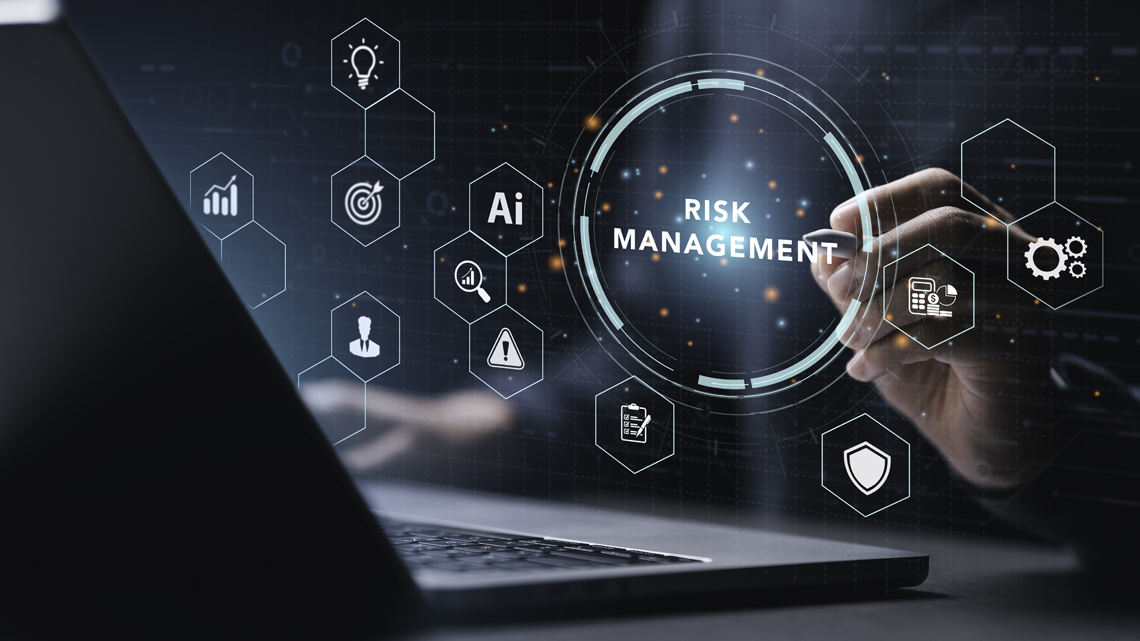
The lingering effect of digital transformation has significantly impacted both promising as well as discouraging organizational efficiency. As the digitization in data processing and overwhelming integration of technology in business has expanded possibilities of cyber threats at an accelerating pace. For enterprises across the world, securing data and systems can no longer be established with installing firewalls and antivirus software. Enhanced security demands an all encompassing strategy to threat management. Companies should foster precautionary actions in advance to eliminate strenuous survival. This blog explores the critical role of risk management in minimizing threat exposure, safeguarding valuable assets and improving organizational resilience.
What is Cybersecurity?
Cybersecurity is creating defense by converging technology, employees, systems and strategies against the malicious activities on valuable electronic data or practices to accomplish the custody. The practices should be channeled to achieve greater protection for company information both internally and externally to ensure that security remains strong and business operations are held without any interruptions.
What is Risk Management?
Risk management refers to the strategic methodology of recognizing, assessing and mitigating potential cyber threats that could disrupt the business efficiency or data security. In this, organizations are able to minimize and prevent the exposure of threats and unauthorized activities with minimal resources.
Why Risk Management is Important in Cybersecurity
- Vulnerabilities awareness: For establishing comprehensive cybersecurity, the awareness of potential vulnerabilities are pivotal. Risk governance helps identify the threatening risks and security gaps throughout systems, applications, third-party installations, and employee practices.
- Combating situational ignorance: Risk control supports businesses to constantly track risk and emergence of threat, ensuring teams are well positioned to prevent any kinds of implications.
- Safeguards company reputation: Risks like data breaches or loss of information not only affects the company stability—-it also damages the credibility that people have for the organization. Through implementing risk governance systems for preventing cyber attacks, businesses can protect their brand image from collapsing.
Core Elements of Cybersecurity Risk Management Framework
1. Risk identification: The primary step of risk management involves listing the entire digital assets including databases, networks, cloud platforms, and user credentials. Evaluate which systems are more prone to cyber threats and outline significant internal and external possible threats such as data breaches, human errors, malware, deprecated software.
2. Risk assessment
Once assessed, calculate the possibility of threat emergence and degree of a dangerous impact. Leverage tools such as risk matrices, scoring models, for finding which part needed more security protection. Comprehending risks based on the potential impact can help organizations to decide which can be controlled with monitoring and which needs immediate action.
3. Risk mitigation
In accordance with the previous risk assessment, businesses can integrate control measures suitable to minimize the susceptibility to harm. The various control activities include:
- Firewall and endpoint installation
- Multi Factor authentication, restrict unauthorized data access
- Data encryption and employing backup protocols
Additionally, non- technical measures such as incident response guidelines, cybersecurity tips, policies and providing safe system management training for employees can also prevent huge risk exposure.
4. Monitoring and review
Executing continuous risk monitoring through tools such as SIEM, ensures consistently tracked and robust security control. Penetration tests and via periodic evaluation will also help bridge the strategy gaps and redefine security encryptions.
What are the Benefits of a Stronger Cyber Risk Management System
- Minimized financial and reputational damage: Increased resilience towards data sensitivity translates into reduced chance for disruptions and legal penalties, helping to maintain brand image.
- Faster threat detection and response: By following continuous monitoring businesses are able to identify unusual activities helping them prevent risks before it escalates.
- Resilience against evolving cyber threats: Developing scalable risk mitigation tactics will help organizations to pivot rapidly in response to new cyber threats. Constant updates to ensure the defense against attacks will help establish a resilience to emerging threats.
- Stronger compliance posture: Regulatory frameworks including GDPR, ISO2001, PDPA, enforce security initiatives on the basis of type of risk. Implementing a well structured risk oversight can protect organizations from heavy compliance complexities.
How to develop a cyber security risk management strategy?
- Map out digital assets and attack possibility
Identify and frame out all technology assets and document vulnerabilities–be it a weak security procedure, information system, data repositories or internal control. Carefully evaluate the potential risk possibilities including human and third party consequences.
- Select and implement control
Opt control by analyzing the risk and security priorities. Some proactive measures include:
- Limit admin access to highly vulnerable systems
- Provide strong data encryptions for safeguarding informations
- leak management and integration of automated security updates
Control actions should be suitable with system functionality.
- Continuous monitoring
Implement tools that provide live threat warnings. Integrate systems to track login anomalies, finding unauthorized access trials, and suspicious data transfers. Check your security defense by regularly tracking unauthorized checking and via simulated threats.
- Train employees
To establish a viable risk governance system in cyber security, molding employees with necessary training is crucial. Offer practical knowledge about recognizing phishing activities, how to employ safe browsing, and how to securely manage data.
- Manage and Document
Introducing a risk register for mapping out known threats, control actions, and cyber events that occurred. Keeping such information as a document would help streamline insurance claims, audits, and ultimately revamp the existing strategies to develop better security options.
Conclusion
In this hyper digital world, the degree of cyber threats are rapidly growing at every moment. To effectively manage this unpredictability, implementing risk governance and control is the ultimate key to safeguard organizational momentum from disrupting cyber attacks. Establishing a structured approach to cyber security, businesses can ensure the safety of their sensitive assets and secure credibility and reputation for the long run. Accomplishing a solid cybersecurity risk management strategy can bring an uplifting evolution for organizations to navigate through in this digital driven landscape.
For regular business updates, visit APAC Entrepreneur.
